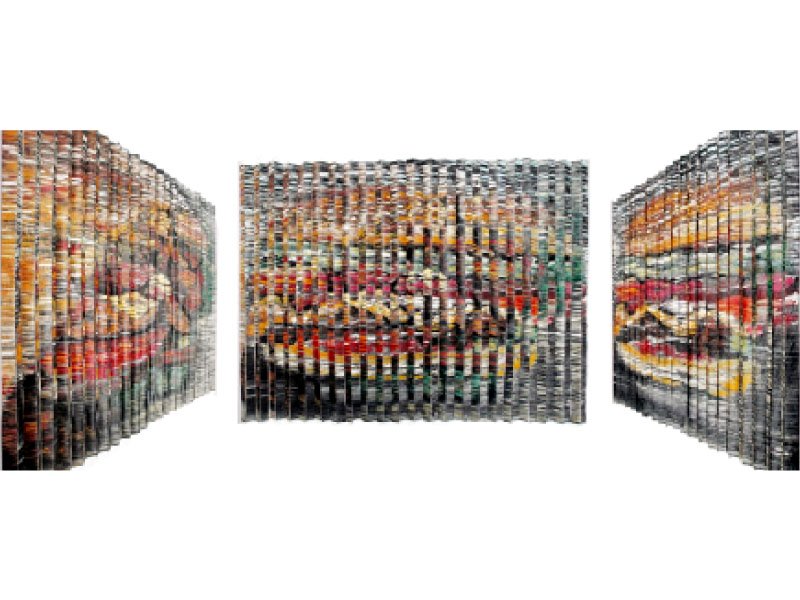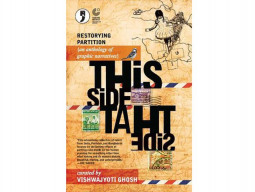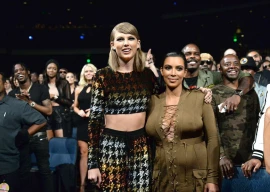
The Lahore Literary Festival kicked off with a visual treat for visitors- Ali Raza’s depiction of life in two worlds brought together on canvas, and Stet a collaboration of works by 21 artists attempting to initiate dialogue between art, the city and the Diaspora.
Stet
Stet., featuring 21 artists opened at the Alhamra Arts Council on Friday. The exhibit has been organised in collaboration with the Citizens Archive of Pakistan and the Office of Conservation and Community Outreach (OCCO).
The works by Bani Abidi, David Alesworth, Sidra Ashraf, Ali Baba, Farida Batool, Faiza Butt, Imran Channa, Iqbal Geoffrey, Malcolm Hutcheson, Ayesha Jatoi, Julius John, Naiza Khan, Saba Khan, Huma Mulji, Mehreen Murtaza, Fazal Rizvi, Mohsin Shafi, Risham Syed, Zaineb Siddiqui, Muhammad Ali Talpur and Salman Toor are displayed.
Amra Khan, one of the curators said, “Stet is an editorial term with roots in Latin...it means, let it stand.”
More than 100 art pieces- paintings, miniatures, models, pictures, advertisement pictures and pictures of historical monuments of Lahore- have been displayed.
Artist Sidra Ashraf said “My work depicts how seemingly simple architectural settings can transform into extraordinary structures through a combination of light and shadows.”
Alizeh Khalid, of CAP, said, “We want to take visitors at the LLF back in time...we have displayed a collection of print advertisements that provide a gateway to the Pakistan of times long past.”
Khalid said the collection had not only received appreciation from the youth, but the also the older visitors who had an opportunity to revisit their own youth through witty advertisements from the ‘50s, ‘60s and ‘70s.
Artist Salman Toor said “I have presented a fairytale image of pretty poverty- depicted through twisting bodies and missing limbs, billowing tattered shawls, and a sweet lightness deliberately at odds with the subject.”
Artist Ayesha Jatoi has used text in her miniature pieces.
Qudsia Rahim, another curator said, “We intend to speculate on the emergence of voices that speak beyond stereotypes and restore a feeling of cultural identity surging through visual mediums searching for a common symbolic centre.”
She said, “In our attempt to engage the arts, city and the Diaspora, we have ended up highlighting the stark differences that have emerged greater than the similarities. Therefore we choose to present it as we see it. We choose not to judge, instruct or change. We choose to let it be and let it stand.”
Solo show
Ali Raza’s solo show opened at the Rohtas 2 Gallery on Thursday. The exhibition will continue till March 20.
As many as 19 paintings- acrylic on canvas; acrylic, ink and string on canvas; acrylic string on canvas; and acrylic and string on canvas are on display- Buy One Get One Free, Three in One, Trilogy, Brain, Box Scan, Lemon or Lime, Hawk is Where the Meat is, Sky These Days, Mood Swing, Post Happily Ever After (in between), Jinnah for Official Use, Headlines, Incognito, Your Near is My Far and Vice Versa, Burger or Shawarma?, Instant Pizza, Work in Progress, Fold Before Tearing and Stalker, were on display.
Samina Iqbal, a PhD candidate of art history, said, “Paintings are static, but the viewer is not. Raza relies on the viewer to fold and unfold different layers of multiple images interpolated in one painting.” Walking in front of the painting, the viewer can only experience one image at a time, the others though still present are momentarily hidden from view, she says, the variety of perspectives is not only present in the paintings but also in the viewpoints from which one views the images. “Raza’s use of low tech painting techniques that combine more than two painted images creates disjunctive narratives and resonates with the simultaneous view of his life in two worlds: Pakistan and America,” said Iqbal.
She said, “Raza also calls into question the role of paintings in the world of seemingly inexhaustible, easily accessible, high-definition, digital imagery. Reproductions are so readily available and viewers consider the digital experience, the actual work. However, Raza’s work cannot be understood through digital reproductions. It can only be fully experienced moving through the physical space of a gallery,” she said.
Published in The Express Tribune, February 22nd, 2014.































COMMENTS
Comments are moderated and generally will be posted if they are on-topic and not abusive.
For more information, please see our Comments FAQ